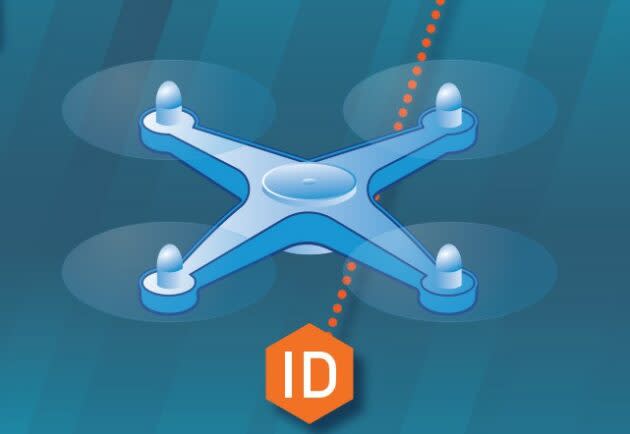FAA’s draft rules aim to use electronic ID system to put a tighter leash on drones

The Federal Aviation Administration has issued proposed regulations that would require virtually all drones to transmit electronic identification codes while in flight.
“Remote ID technologies will enhance safety and security by allowing the FAA, law enforcement, and federal security agencies to identify drones flying in their jurisdiction,” Transportation Secretary Elaine Chao said today in a news release about the plan.
The FAA established a registration system for recreational drones back in 2015, and since then, nearly 1.5 million drones and 160,000 remote pilots have been registered. Earlier this year, the agency set up an automated system to authorize recreational flights in controlled airspace.
The newly proposed Remote ID system would build upon those earlier steps. It calls upon drone manufacturers to make their products capable of sending out identification codes as well as their location. The rules would apply to all drones heavier than 0.55 pounds (8.8 ounces), and manufacturers would have to comply two years after the regulations go into effect. Drone operators would have three years to phase out non-complying devices.
There’d be three approved modes of operation for drones:
If the operator keeps the drone within a 400-foot radius, the Remote ID could be sent via a wireless internet connection to a monitoring service.
Beyond that radius, the drone would have to broadcast its identifying information over a yet-to-be-specified radio frequency.
Drones that don’t have the Remote ID system installed could be operated only within special FAA-designated zones — usually the same sorts of places where hobbyists fly model airplanes.

Plenty of details still have to be filled in: The FAA is leaving it up to the drone industry to come up with standards and frequencies, and it plans to work with contractors to develop online monitoring systems. Once the regulations are approved, probably sometime next year, all drones would have to be registered. And issues surrounding enforcement of the rules are, as usual, still up in the air.
Establishing a regulatory framework should open the way for companies to move into the Remote ID market, which some analysts say could be a $1.25 billion business by 2029. Among the players in that market is Kittyhawk.io, which is one of the ventures in Boeing HorizonX’s investment portfolio.
Such a system could also smooth the way for Amazon and other companies to move forward with far-ranging drone delivery systems under the FAA’s watchful eye. During Amazon’s re:MARS conference in June, Worldwide Consumer CEO Jeff Wilke said he expected the Seattle-based retailer to start drone deliveries “within months.”
Update for 2 p.m. PT Dec. 26: We’ve corrected the weight limit for the Remote ID requirement.
More from GeekWire:
Temporarily grounded? Recreational drone operators face new FAA requirements
FAA lays out its plan to ease restrictions on drones flying at night and over people
Airport drone disruption: It’s happening at Gatwick in London, could it happen here?
FAA puts new drone management system in play and eases flight restrictions